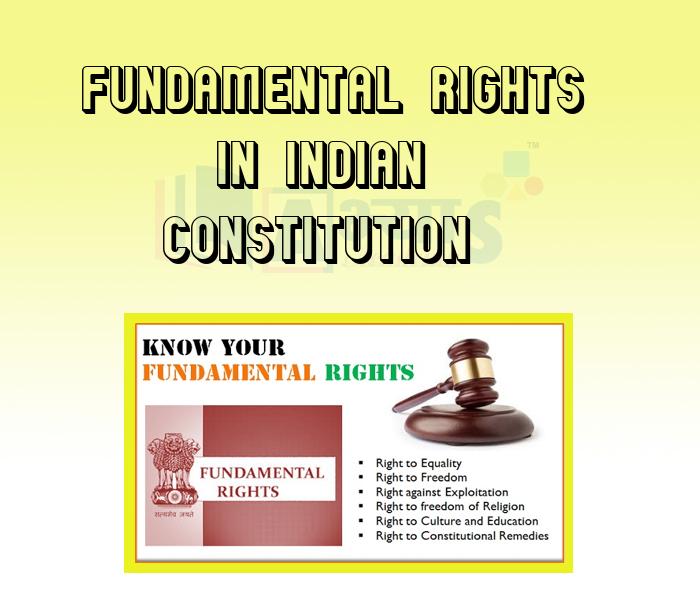Fundamental Rights In Indian Constitution










Fundamental Rights In Indian Constitution
Fundamental Rights:-
Fundamental rights is a charter of rights contained in the Constitution of India. It guarantees civil liberties such that all Indians can lead their lives in peace and harmony as citizens of India. These include individual rights common to most liberal democracies. Violations of these rights result in punishments as prescribed in the Indian Penal Code, subject to discretion of the judiciary.
The Fundamental Rights are defined as basic human freedoms, which every Indian citizen has the right to enjoy for a proper and harmonious development of personality. These rights universally apply to all citizens, irrespective of race, place of birth, religion, caste, creed, colour or gender. They are enforceable by the courts, subject to certain restrictions. The Rights have their origins in many sources, including England's Bill of Rights, the United States Bill of Rights and France's Declaration of the Rights of Man.
Which of the following is not a Fundamental Right ?
| |||
| Right Option : C | |||
| View Explanation | |||
Which of the following part of the Constitution of India is called 'Magnacarta of India'? | |||
| Right Option : A | |||
| View Explanation | |||
Which of the following are correct : (a) The Fundamental Right to Property was described in Article 19 (1) f and Article 31 of the Indian Constitution. (b) Parliament can amend the Fundamental Rights but if it damages the basic structure of the constitution, the judiciary can declare it unconstitutional. (c) Some Fundamental Rights, such as Article-15, Article- 16, Article-19, Article-29-30 of the Indian Constitution, are available only to Indian citizens, i.e. these rights can be enjoyed by Indian citizens only. | |||
| Right Option : D | |||
| View Explanation | |||
Students / Parents Reviews [10]
My experience with Abhyas academy is very good. I did not think that my every subject coming here will be so strong. The main thing is that the online tests had made me learn here more things.

Hiya Gupta
8thIt was a good experience with Abhyas Academy. I even faced problems in starting but slowly and steadily overcomed. Especially reasoning classes helped me a lot.

Cheshta
10thAbout Abhyas metholodology the teachers are very nice and hardworking toward students.The Centre Head Mrs Anu Sethi is also a brilliant teacher.Abhyas has taught me how to overcome problems and has always taken my doubts and suppoeted me.

Shreya Shrivastava
8thIt has a great methodology. Students here can get analysis to their test quickly.We can learn easily through PPTs and the testing methods are good. We know that where we have to practice

Barkha Arora
10thBeing a parent, I saw my daughter improvement in her studies by seeing a good result in all day to day compititive exam TMO, NSO, IEO etc and as well as studies. I have got a fruitful result from my daughter.

Prisha Gupta
8thAbhyas is a complete education Institute. Here extreme care is taken by teacher with the help of regular exam. Extra classes also conducted by the institute, if the student is weak.

Om Umang
10thOne of the best institutes to develope a child interest in studies.Provides SST and English knowledge also unlike other institutes. Teachers are co operative and friendly online tests andPPT develope practical knowledge also.

Aman Kumar Shrivastava
10thMy experience was very good with Abhyas academy. I am studying here from 6th class and I am satisfied by its results in my life. I improved a lot here ahead of school syllabus.

Ayan Ghosh
8thI have spent a wonderful time in Abhyas academy. It has made my reasoning more apt, English more stronger and Maths an interesting subject for me. It has given me a habbit of self studying

Yatharthi Sharma
10thAbhyas Methodology is very good. It is based on according to student and each child manages accordingly to its properly. Methodology has improved the abilities of students to shine them in future.
